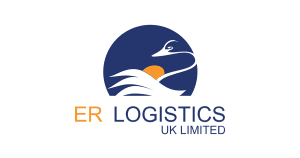Moving your office can be a daunting task, but with proper planning and organisation, you can ensure a smooth transition. At ER Logistics we understand the challenges involved in office moves, especially for small to medium-sized companies. To help you navigate the process successfully, we’ve compiled a list of our top 10 packing and labelling tips to ensure your move is stress- and hassle-free.
Develop a comprehensive moving plan
Start by creating a detailed spreadsheet plan that outlines all the tasks and deadlines leading up to the move. Assign responsibilities to individuals or teams to ensure everyone is on the same page. Having a well-structured plan will help you stay organised and meet important milestones.
Assess what’s needed
Use the move as an opportunity to declutter. Before packing, conduct a thorough inventory of your office belongings. Identify items that are essential and discard or donate items that are no longer needed. Decluttering will not only reduce the volume of items to pack but also make it easier to set up your new office space efficiently.
Pack up your troubles
Ensure you have an ample supply of packing materials, including sturdy cardboard boxes in various sizes, packing tape, bubble wrap, packing paper, and markers. It’s better to have more supplies than you think you’ll need, as it’s common to underestimate the amount of packing materials required.
Archive the archive
When packing, start with items that are not frequently used, such as archived files or seasonal items. Clearly label each box with its contents and the destination in the new office. This will save you time and effort when unpacking later. Consider using color-coded labels to easily identify items belonging to specific departments or areas. Archived financial folders must be kept for a period of seven tax years but you’d be amazed by how many companies simply don’t get around to disposing of files after this period; now is a great time to chuck out old paperwork.
Move with care
Wrap delicate items, such as glassware, electronics, or artwork, with bubble wrap or packing paper to prevent damage during transportation. Clearly mark these boxes as “Fragile” to ensure they receive extra care during handling. If possible, disassemble furniture to reduce the risk of damage and make it easier to transport.
Label everything
To avoid confusion when reconnecting electronics, label all cables and cords before packing them. Take pictures of the setup of complex equipment for reference during reassembly. Keep small components, such as screws and bolts, in labelled jiffy bags and tape them securely to the corresponding item or its packaging.
Pay close attention to IT
If your company has an IT department, involve them in the moving process early on. They can help ensure a smooth transition of your technology and infrastructure, including servers, computers, and network equipment. Make a backup of important data and securely transport it separately from the main office move.
Notify relevant parties
Update your address with the post office, clients, suppliers, and service providers well in advance. Inform your employees, stakeholders, and customers about the upcoming move and provide them with the new contact details. Triple-check all your corporate accounts with taxi firms and courier agencies have the correct delivery address and its good policy to pay for a 3-month mail redirection service with Royal Mail so nothing slips through the net.
Update – or request marketing colleagues assist – your online GPS forms, Google Business Profile, website, and social media platforms with the new address. An upward move could even be used as a positive news hook for generating good PR.
Consider the professionals
Consider engaging professional office movers who specialise in commercial relocations. They have the experience, equipment, and expertise to handle office moves efficiently. Professional movers can help with packing, transportation, and even unpacking, saving you valuable time and minimising disruptions to your business operations.
Learn from the experience
Once the move is complete, assess the process and learn from it. Identify any areas that could have been improved or any challenges you or colleagues faced during the transition. This evaluation will help you to refine your moving strategies for future office relocations.
Moving office doesn’t have to be a stressful experience. By following these comprehensive packing and labelling tips, you can ensure a smooth office move for your company. Remember, meticulous planning, proper organisation, and the assistance of professional office movers like ER Logistics will all contribute to a successful transition, allowing you to resume your business operations swiftly and efficiently in your new location.

